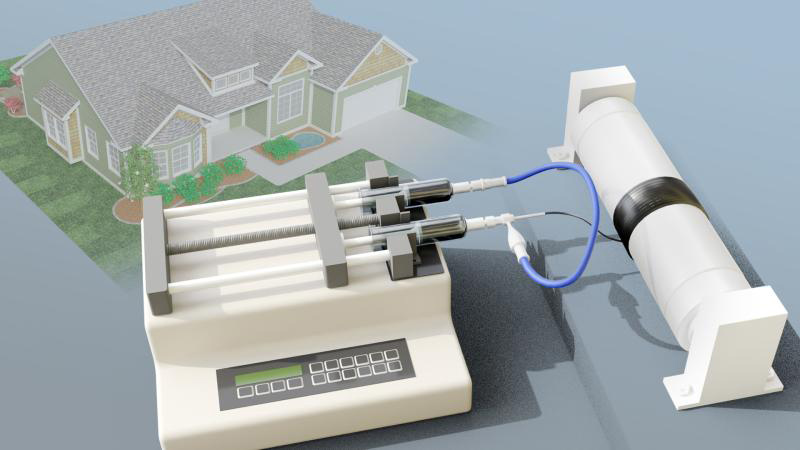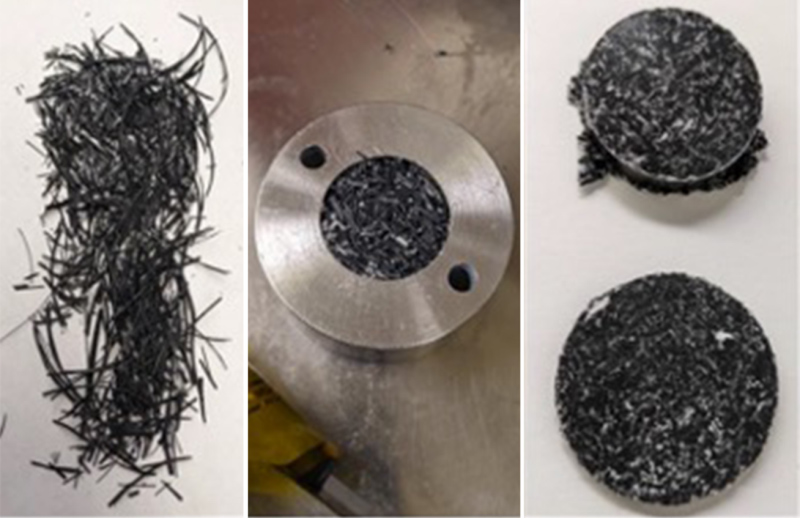By using a coaxial technique, polymer and salt were pulled together in one direction to form core-shell fibers that contain a salt core and polymer shell.
 An encapsulation system developed by ORNL researchers prevents salt hydrates, which are environmentally friendly thermal energy storage materials, from leaking, and advances their use in heating and cooling applications. Credit: Andy Sproles/ORNL, U.S. Department of Energy.
An encapsulation system developed by ORNL researchers prevents salt hydrates, which are environmentally friendly thermal energy storage materials, from leaking, and advances their use in heating and cooling applications. Credit: Andy Sproles/ORNL, U.S. Department of Energy.
Quality Digest does not charge readers for its content. We believe that industry news is important for you to do your job, and Quality Digest supports businesses of all types.
Published: Tuesday, February 13, 2024 – 12:01
(Oak Ridge National Laboratory: Oak Ridge, TN) — Oak Ridge National Laboratory researchers have developed a novel way to encapsulate salt hydrate phase-change materials within polymer fibers through a coaxial pulling process. The discovery could lead to the widespread use of the low-carbon materials as a source of insulation for a building’s envelope.
So please consider turning off your ad blocker for our site.
Thanks,
Quality Digest
منبع: https://www.qualitydigest.com/inside/innovation-news/encapsulating-low-carbon-materials-021324.html
However, someone has to pay for this content. And that’s where advertising comes in. Most people consider ads a nuisance, but they do serve a useful function besides allowing media companies to stay afloat. They keep you aware of new products and services relevant to your industry. All ads in Quality Digest apply directly to products and services that most of our readers need. You won’t see automobile or health supplement ads.
 Encapsulated fibers, salt hydrates, and polymers, pictured above, are produced through a coaxial pulling process. Credit: ORNL, U.S. Department of Energy.
Encapsulated fibers, salt hydrates, and polymers, pictured above, are produced through a coaxial pulling process. Credit: ORNL, U.S. Department of Energy.
Our PROMISE: Quality Digest only displays static ads that never overlay or cover up content. They never get in your way. They are there for you to read, or not.
Innovation
Encapsulating Low-Carbon Materials
Process contains leaks, improves thermal performance in buildings
“Coaxial pulling lowers the cost of encapsulation and offers better thermal conductivity and energy density, all while being easy to reproduce and scale up,” says ORNL’s Jaswinder Sharma. “The fibers are flexible and can be seamlessly incorporated into current building materials and products.”
Environmentally friendly salt hydrates can function as a thermal battery, providing heating and cooling by storing and releasing energy when changing from solid to liquid. The challenge to integrating them into walls and roofs is how they are enclosed to prevent leaking.
 An encapsulation system developed by ORNL researchers prevents salt hydrates, which are environmentally friendly thermal energy storage materials, from leaking, and advances their use in heating and cooling applications. Credit: Andy Sproles/ORNL, U.S. Department of Energy.
An encapsulation system developed by ORNL researchers prevents salt hydrates, which are environmentally friendly thermal energy storage materials, from leaking, and advances their use in heating and cooling applications. Credit: Andy Sproles/ORNL, U.S. Department of Energy.